アクセス
諏訪商工会議所
〒392-8555
長野県諏訪市小和田南14-7
Mail:info@suwacci.or.jp
TEL:0266-52-2155
営業時間:9:00~12:00、13:00~17:00
休業日:土日祝日、年末年始、他
適格請求書登録番号:T1100005007814
諏訪商工会議所
〒392-8555
長野県諏訪市小和田南14-7
Mail:info@suwacci.or.jp
TEL:0266-52-2155
営業時間:9:00~12:00、13:00~17:00
休業日:土日祝日、年末年始、他
適格請求書登録番号:T1100005007814

OHINA SOBA is a local delicacy in Suwa, Nagano that SOBA noodles, Nagano’s signature local food, is served with grated Ueno Dikon, a local heirloom radish, and Miso locally produced fermented soybean pastes.
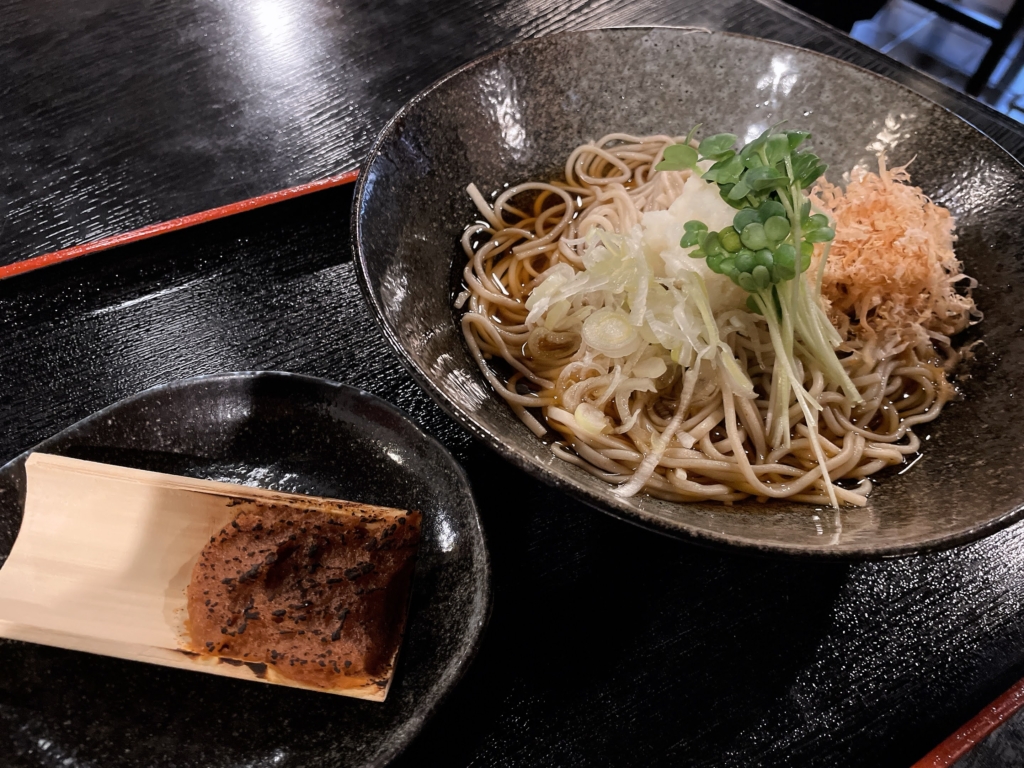
Provided by OSHINA Soba Noodles See Google maps
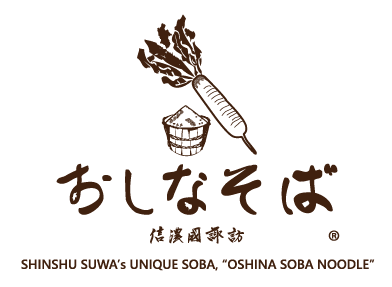
Around 1750, “Shinano” (now Nagano) was called “OSHINA” in Edo (now Tokyo). Author of “Soba Zensho” (The Complete Book of Soba Noodles), Nissinsha Yuukyoshi, had visited Suwa and discovered the practice of the locals to drink hot water used to boil Soba noodles at the end of the meal. He referred to it as “OSHINA-YU” to introduce this practice in Edo (Tokyo). The name “OSHINA SOBA” has been given in reference to several old Soba-related tales in the area.
Reference:
“Gendai Goyaku, SOBA ZENSHO, Den” published by Heart Shuppan 2006.
(Written by Nissinsha Yuukyoshi, edited by Shigeru Niigima, translated by Kazuo Fujimura)
The world of Soba in the mid-Edo period is described in an interesting way, and the particulars of Soba lovers are also described.
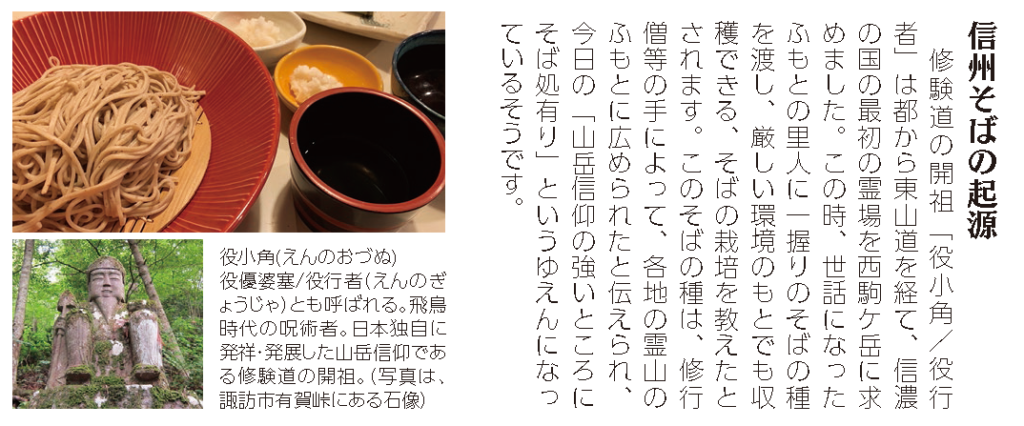
The founder of SHUGENDO, En-no-Kozuno* (real name is En-no-Gyoja), traveled from the capital via the Eastern Mountain Route to seek the first sacred site in the land of Shinano at Nishikomagatake. At that time, he gave a handful of buckwheat seeds to a villager at the foot of the mountain and taught him how to cultivate buckwheat, which could be harvested even under severe conditions. These buckwheat seeds were spread by ascetic monks and others to the slopes of many sacred mountains, which is why the old proverb says, “Where there is a strong mountain worship, there is a Soba place.”
*En-no-Kozuno was a Japanese ascetic sorcerer in the Asuka period and a founder of Shugendo, a mountain religion that originated and developed uniquely in Japan.
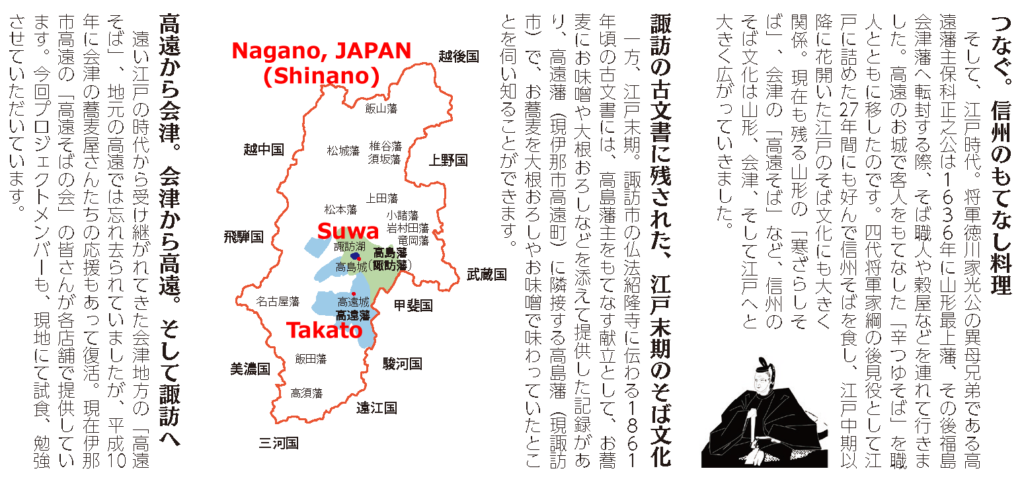
During the Edo period, Lord Masayuki Hoshina, half-brother of Shogun Tokugawa Iemitsu, the lord of the Takato domain, was transferred to the Yamagata Mogami domain in 1636 and then to the Fukushima Aizu domain, he took Soba craftsmen and grain dealers with him. The signature Soba recipe served with spicy sauce with grated radish and miso paste that they offered to guests at the castle in Takato was also taken with them. During the 27 years he spent in Edo as the guardian of the fourth shogun, Ietsuna, he also enjoyed eating Shinshu Soba and was greatly involved in the Edo Soba culture that blossomed from the mid-Edo period onward. Shinshu Soba culture had spread to Yamagata, Aizu, and Edo, affecting Yamagata’s signature Soba dish “Kanzarashi Soba” and Aizu’s “Takato Soba” which still exist today.
In the historical archives around 1861 from the late Edo period handed down at Buppo-Shoryu-ji Temple in Suwa City, there is a record of Soba noodles served with miso paste and grated radish as a menu for entertaining the lord of the Takashima Domain. The record suggests that Soba noodles were served with grated radish or miso paste in the Takashima Domain (now Suwa City), which is next to the Takato Domain (now Takato Town, Ina City).
“Takato Soba” from the Aizu region, which has long been passed down since the Edo period, has been forgotten in its place of origin, Takato area in Ina city. In 1998, the members of the “Takato Soba Association” revived the recipe and started serving it in local restaurants. The project members of Oshina Soba noodles had sampled the authentic Takato Soba, which provided valuable insights for creating the Oshina Soba recipe.
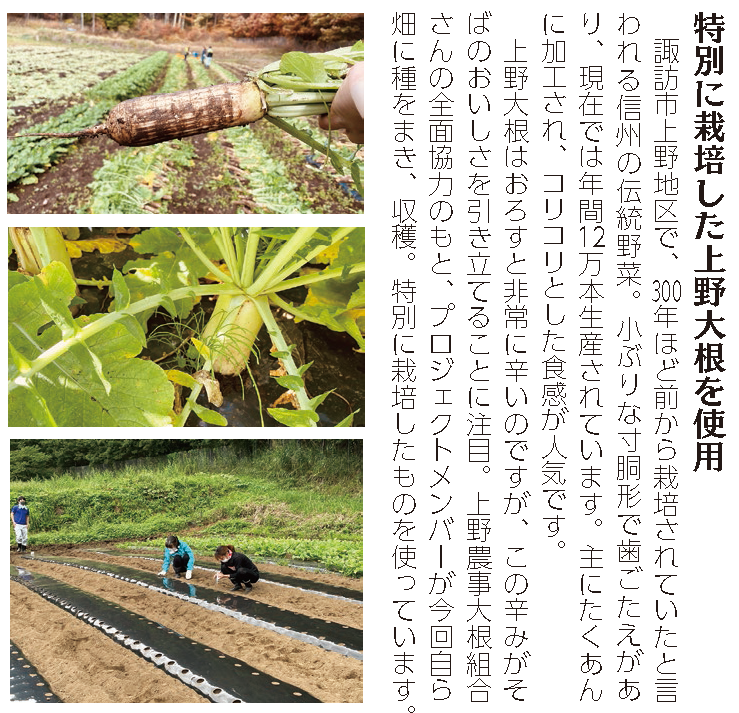
Ueno Dikon is a local traditional radish that has been grown in Suwa City’s Ueno area for nearly 300 years. Annually, 120,000 of this little stumpy-shaped, chewy Ueno Dikon are cultivated. One of the popular recipe is a pickled radish called “Takuan”, which is a beloved local delicacy known for its crisp texture and enjoyed by the locals.
Ueno daikon is extremely spicy when grated, but this spiciness enhances the flavor of Soba noodles. With the full support of the Ueno Farmers’ Daikon Association, the project members sowed the seeds and harvested the daikon themselves. This daikon is used to make Oshina Soba.
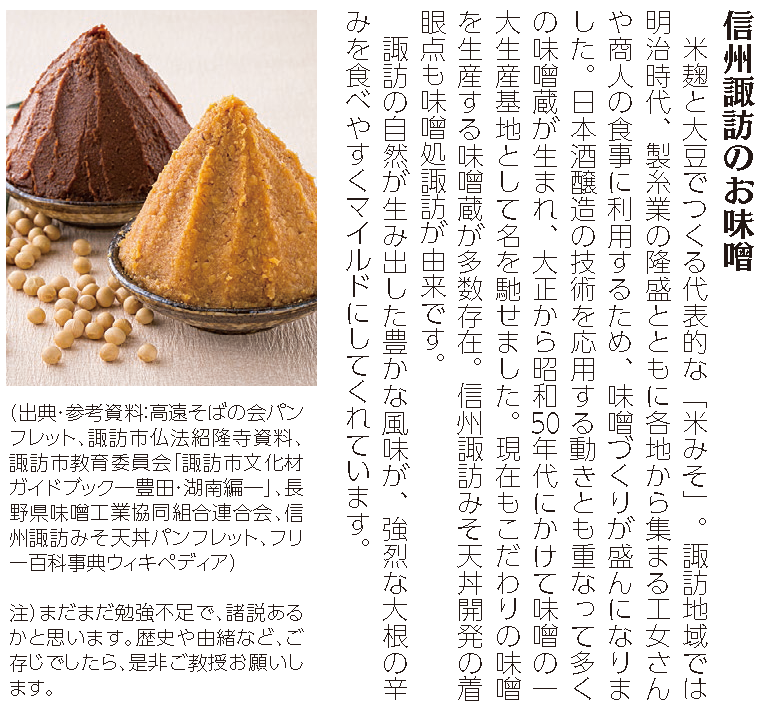
Suwa’s miso is a classic “rice miso” produced from rice malt and soybeans. Miso production flourished in the Suwa area during the Meiji period, as the silk industry thrived and miso was used to feed the workers and merchants who arrived from all over the country. The trend to use sake brewing technique in other industries was intensified among the sake breweries, which were already thriving in the Suwa region at the time, and this resulted in the establishment of several miso breweries. The area became famous as a major miso manufacturing base from the Taisho era until the 1950s. Even now, there are numerous miso brewers producing their own specialty miso. ” Shinshu Suwa Miso Tendon” is another local delicacy developed with a focus on Suwa as a miso production center. The rich flavor produced by Suwa’s nature makes the intense spiciness of daikon radish mild and easy to eat.
(References)
-The leaflet published by Takato Soba Society.
-Old archives owned by Buppo-Shoryu-ji
-“Cultural Properties in Suwa City –Toyoda and Konami version-“ published by Suwa City Board of Education
-Nagano Federation of Miso Manufacturers
-The Shinshu Suwa Miso Tendon leaflet published by Suwa Chamber of Commerce & Industry
-“Food Culture Nurtured by the Aizu Climate -10 traditional local foods-“ published by Aizu-Wakamatsu Chamber of Commerce and Industry. Dec. 25, 2016.
Note:
We are aware that there are various theories and opinions on the origin and historical background of Shinshu Soba. If you have any knowledge, please kindly share it with us.

Resource Development Department of Suwa Prosperity Creation Project is working on a variety of projects to encourage local residents to use “food” as an opportunity to get out and explore the city.
Resource Development Department of Suwa Prosperity Creation Project
in the Suwa Chamber of Commerce & Industry
14-7 Kowata-minami, Suwa, Nagano 3920023, JAPAN
TEL:+81-266-52-2155

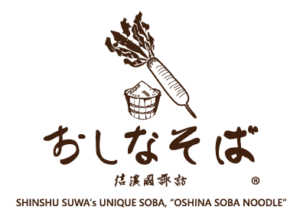
この記事が気に入ったら
いいね または フォローしてね!